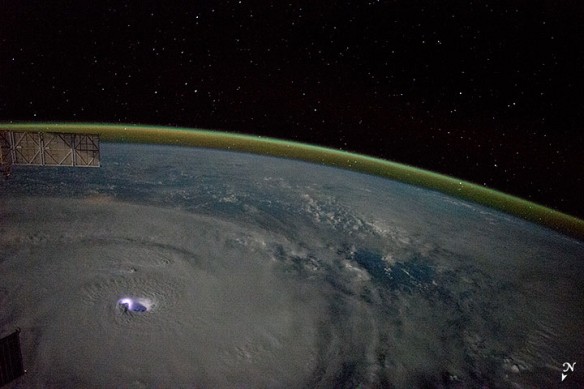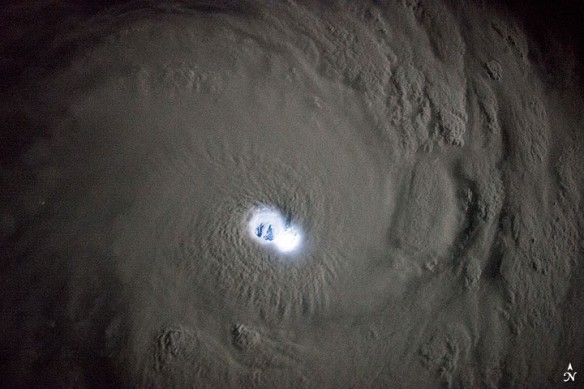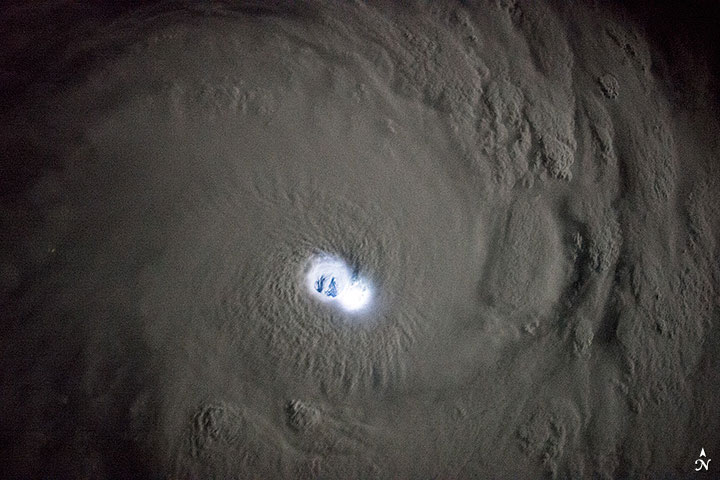
Astronaut photographs ISS042-E-135015 and ISS042-E-135030 were acquired on January 12, 2015, with a Nikon D4 digital camera using a 28 millimeter lens, and are provided by the ISS Crew Earth Observations Facility and the Earth Science and Remote Sensing Unit, Johnson Space Center. The image was taken by the Expedition 42 crew.

By William L. Stefanov, NASA-JSC.;
Though these images may look like they come from a science fiction movie, they are in fact photographs of tropical cyclone Bansi as seen at night by astronauts on the International Space Station (ISS). The images were taken when the ISS was east of Madagascar.
Bansi formed in the southwestern Indian Ocean on January 11, 2015. By the time this photo was taken on the following day, Bansi had achieved tropical cyclone strength, with sustained maximum winds over 185 kilometers (115 miles) per hour. The cyclone would reach category 4 strength before becoming a weak extra-tropical system on January 19.
The dim swirl of the cloud bands covers the ocean surface in both night images. The eye of the cyclone is brilliantly lit by lightning in or near the eye wall. The low-light settings of the camera used to take the image accentuate the contrast.
In the top image, the camera also accentuates the yellow-green airglow above the Earth’s limb, an atmospheric phenomenon frequently seen by astronauts. Stars appear above the airglow layer, and the solar panels of a docked Russian spacecraft jut into the image (upper left).









